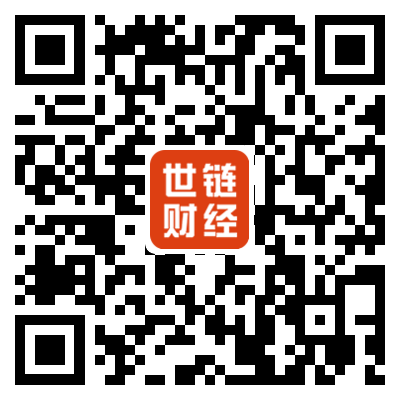-
What is a blockchain network? Private Blockchain vs. Public Blockchain
 linkweb3
linkweb3 2023-01-10
2023-01-10 4996
4996 Tech
Tech
-
Summary:Blockchain network is a technical infrastructure that allows applications to access classification accounts and smart contract services. The difference between public and private blockchain.
The blockchain network is basically a technical network that provides applications with ledger and smart contract (chain code) services. First of all, these smart contracts are used to generate transactions, which are subsequently distributed in each peer node in the network, where they are recorded in the copy of their classification. The user of the application must be the end user of the client application. Blockchain supports thousands of applications and networks. These applications and networks are practical and can provide value for various industries such as fashion, finance and games. In this article, we will explore the similarities and different characteristics of public blockchain and private blockchain networks.
What does the blockchain network mean
Blockchain is a distributed, non -altered classification account, which can easily record transactions and management assets (tangible and intangible) in the corporate network. On the blockchain network, almost anything valuable can be recorded and traded, thereby reducing risks and cutting costs for all relevant parties. But what is a blockchain network?
Blockchain network is a technical infrastructure that allows applications to access classification accounts and smart contract services. Smart contracts are mainly used to initiate transactions, and then each peer node that transmits them to the network cannot be recorded on their ledger copy. End users or blockchain network administrators using client applications are examples of application users.
You can use the blockchain network to track orders, accounts, payment, production, etc. You can check all the facts of the transaction, because members share a single factual view to provide you with greater confidence and additional efficiency and opportunities. So how many blockchain networks are there?
In most cases, multiple organizations will create an alliance to build a network, and their permissions are managed by a group of strategies agreed by the alliance when they first configure the network. Other types of blockchain networks can be public, private, and licensed.
The main features of blockchain technology
Blockchain is not a single authorization agency, but depends on decentralized user networks to verify and record transactions. Due to this characteristic, blockchain transactions are consistent, fast, secure, affordable and tampered with tampering. These characteristics are explained as follows:
Quick: The transaction is passed directly from the sender to the receiver without one or more intermediaries.
Consistent: The blockchain network runs around 7 days a week and 24 hours a day uninterrupted.
Cheap: The operating cost of the blockchain network is low because they do not have a centralized rent -seeking intermediary.
Safety: The distributed node network of the blockchain provides collective protection for attacks and interruptions.
Tamperery: The data is transparent. Once a time stamp is stamped on the classification account, it cannot be changed, so that the blockchain cannot penetrate fraud and other criminal acts. Similarly, everyone who has the right to access the public blockchain network can see the created transactions.
Public blockchain network
Public blockchain refers to the core activity of anyone can freely join and participate in the blockchain network. Anyone can read, write, and audit on the public blockchain network, which helps to realize the autonomy and decentralization of blockchain discussion.
Public blockchain is a blockchain included in the world that everyone in the world can view, send transactions and expect these transactions to be valid and involved in the consensus process. What is the state.
Economics -the combination of encrypted verification of economic incentives and use of workload (Bitcoin) or equity certificate (Ethereum) -ensures the security of public blockchain (Ethereum). These blockchains are usually regarded as "completely decentralized".
Public blockchain provides a mechanism that proves that the permissions scope of the application developers by prove that specific operations exceed the scope of application developers, thereby protecting application users from its influence of its developers. Because the public chain is open, it is likely to be adopted by many organizations and does not require third -party verification.
The anonymity of public blockchain is another reason why it attracts so many supporters. Yes, it is a safe and reliable open platform that you can carry out business correctly and effectively. In addition, you don't need to disclose your true identity or name. If your identity is protected, no one can track your activities on the Internet.
However, a lot of computing power is required, the transaction privacy is very small or no, and the security is insufficient. These are important considerations for the use of blockchain in various industries.
Benefits of public blockchain
Public blockchain provides a method of protecting application users from developing personnel infringement, and has established some things that even application developers have no right to do.
Because the public chain is open, it is likely to be used by a lot of entities and does not require third -party verification.
Features of public blockchain
Public blockchain is an open network that allows anyone to participate in the network, that is, public blockchain does not require licenses. In this type of blockchain, anyone can join the network and read, write or participate in the blockchain. Public blockchain is decentralized and has no single entity that controls the network. The data on the public blockchain is safe, because once the data is verified on the blockchain, it is impossible to modify or change the data.
The characteristics of public blockchain include:
High safety--
Safe (51% rule) due to mining.
Open environment-
Public blockchain is open to everyone.
Anonymous-
Everyone is anonymous in public blockchain. No need to use your real name or true identity, so everything will be hidden, and no one can track you based on this.
Irregularly
Public blockchain does not have any nodes that must be complied with. Therefore, how to use this platform to improve itself is unlimited.
Completely transparent-
Public blockchain allows you to view the classification account at any time. Without any room for corruption or any differences, everyone must maintain a classification account and participate in consensus.
Real decentralization-
In this type of blockchain, there is no concentrated entity. Therefore, the responsibility for maintaining the network is completely borne by the node. They are updating the classification account and promoting fairness with the help of consensus algorithms.
Comprehensive user authorization-
Usually, in any network, users must abide by many rules and regulations. In many cases, the rules may even be unfair. But not in the public blockchain network. Here, all users have been given power because no central institutions have supervised their every move.
Unable to change- ——
When something is written into the blockchain, it cannot be changed.
Distributed--
The database is not as concentrated as the client-server method. All nodes in the blockchain are involved in transaction verification.
Private blockchain network
Private blockchain, also known as the hosting blockchain, is a licensed blockchain by a single physical management. The central agency in private blockchain decides who can become nodes.
In addition, central power agencies do not always grant the right to perform the same execution function of each node. However, because the public's access to private blockchain is restricted, they are only partially decentralized.
Enterprise's virtual currency exchange network Ripple (XRP) and open source blockchain applications Hyperledger are two examples of private blockchain.
For data confidentiality considerations, company -level network sharing usually requires higher -level privacy. If this is one of your needs, private blockchain is the best choice. Private blockchain is undoubtedly a more stable network substitute, because only a few users can access specific transactions.
In addition, compliance is crucial in each industry. Any technology that does not follow strict compliance rules is destined to fail at some point. In order to seamless and direct transactions, the private blockchain follows and contains all compliance regulations in its ecosystem.
Both private blockchain and public blockchain have disadvantages: Public blockchain requires longer time to verify new data than private blockchain. Private blockchain is more likely to be affected by fraud and bad actors. In addition, centralized methods often encourage excessive relying on third -party management tools and help a few industry participants. The creation of the alliance blockchain is to overcome these defects.
Benefits of private blockchain
Consortiums or companies running private blockchain can easily change the rules of blockchain, restore transactions, and modify balances. For example, in some cases, such as the National Land Registration Office, this function is necessary.
The verification is known, so any 51% attack from some miners' collusion is not applicable.
The transaction only requires a few trustworthy nodes to verify, and the processing capacity is very high, and no 10,000 node verification is required.
Due to the limitations of reading permissions, private blockchain provides higher -level privacy.
Features of private blockchain
Private blockchain is managed by network administrators. Participants need to agree to join the network, that is, private blockchain is a allowed blockchain. One or more entities control the network, which led to dependence on third parties for transactions. In this type of blockchain, only the entity involved in the transaction understands the transactions, and other entities cannot access it, that is, the transaction is private.
Some of the characteristics of private blockchain are:
Complete privacy-
It focuses on privacy issues.
Private blockchain is more centralized.
High -efficiency and faster trading--
When you distribute nodes locally, but there are fewer nodes to participate in classified accounts, the performance is faster.
Better scalability-
Being able to add nodes and services on demand can provide great advantages for enterprises.
Similarity of public and private blockchains
Over the years, many variants of blockchain have evolved, and terms have been misunderstood. This is easy to do, because there are many similarities in public and private blockchain:
Both are decentralized point -to -point networks, and each participant maintains a copy of a shared copy of only digital signature transaction classifications.
Both maintain the copy synchronization through the agreement called consensus.
Both provide a certain guarantee for the immutability of the classification account, even if some participants have errors or malicious.
Comparison of the differences between public and private blockchain

Other types of blockchain
There are four main blockchain categories, including private, public, licensed (mixed) and alliances (also known as union) blockchain.
Alliance blockchain network
Unlike private blockchain, the alliance blockchain is a licensed blockchain by organizing alliances rather than a single organization. Therefore, the alliance blockchain has more decentralization than private blockchain, thereby improving security.
On the other hand, it may be difficult to establish a consortium because it needs cooperation between multiple enterprises, which will bring logistical problems and the risk of violating anti -Toraz.
In addition, some supply chain members may lack the necessary technology or infrastructure that uses blockchain technology. Those who do this may think that the preliminary cost of digitizing data and connecting data to other supply chain members is too high to be able to pay.
Enterprise software developer R3 has developed a set of popular alliance blockchain solutions for the financial service industry and other industries. Cargosmart has created a global transportation business network collaboration. This is a non -profit blockchain alliance, which aims to achieve digitalization of the shipping industry and make the shipping industry operator more effective.
The alliance chain is supervised by one party, but is not dominated. The regulators can run their rules, change the balance, and immediately terminate the proven to be full of wrong transactions after each member's consent. In addition, it also performs various tasks to provide results -oriented collaboration for enterprises with the same goals.
Since the information from the inspection block is hidden from the public vision, the alliance chain is highly privacy. However, anyone who belongs to the blockchain member can access it. Unlike the public blockchain, the alliance chain has no transaction fee.
Another element different from the public blockchain is its flexibility. The maximum verification may have problems in the mutual agreement and synchronization of public blockchain. The fork is formed due to this difference, which will not happen in the alliance network.
Regardless of how much advantages of the alliance chain, it also has its disadvantages. One of the most significant disadvantages of this blockchain is that it is centralized, which makes it vulnerable to the attack of malicious players. When the number of participants is limited, one of them is the culprit.
The launch of the alliance chain is a delicate process. Everyone must approve a member communication agreement. However, because the flexibility of an enterprise is not as good as a small enterprise, it is time to establish a public network connecting the enterprise.
Permission blockchain network
License blockchain networks are usually established by companies that create private blockchain. It is worth noting that the public blockchain network can also be permitted. This limits who has the right to participate in the network and the transactions they can do. To participate, participants must first get invitation or authorization.
The licensed blockchain network provides a decentralized platform, which means that data is not stored in the central repository, and anyone can access it anytime, anywhere. It ensures that all records have an unchanged signature. The entire system and data are safe because all information exchange and transactions are encrypted.
In addition, the miners and participants of the network remain anonymous.
Another advantage of licensed blockchain is transparency. Everyone can see all data and information. However, this benefit is counterproductive, which has aroused concerns about the security of data security in the blockchain.
A person does not need to prove him or her identity on the permitted blockchain. To join the network, all you have to do is invest in your computing power. Miners who determine NONCE values and solve complex mathematics problems can join the system.
For many companies, the limitations of the blockchain system that do not need to be licensed make it an adventure proposal. They believe that the use of blockchain without licenses to sell company solutions is not suitable for them. Due to these shortcomings, Ethereum as a blockchain without permission is shifting from workload to proof of equity proof as its consensus method.
Although anonymous is a good sign, because the identity of the transaction participant is hidden, it may also cause trouble. For example, in a scam, or if anyone tries to track people participating in the transaction, it is impossible to make an unauthorized blockchain. Therefore, due to these characteristics, many people are using blockchain to perform illegal activities.
The industry that benefits from various blockchain networks
Blockchain technology is good in multiple fields, including supply chain, finance, real estate and gaming. Companies and individuals can avoid interaction with third -party to carry out the cost and fuzzyness of conventional business. Smart contracts are self -executed code stored and accessing on unsusable blockchains.
Bitcoin (BTC), Bitcoin Cash (BCH), LTC (LTC), and a large number of other cryptocurrencies centered on the use of blockchain technology. Compared with the blockchain, traditional third -party payment providers have low efficiency in many aspects and have low global accessibility.
In addition, energy companies such as natural gas and power suppliers and public utilities can profit from the blockchain in various ways. One is the use of a smart grid that requires local power supply and demand market. Another application of the blockchain is to securely share data between home smart meters.
In addition, industries that rely on efficient and secure data ownership and management mechanisms, such as medical care and digital identification, are discovering new cutting -edge solutions mainly assisted by blockchain network protocols. Blockchain enables users to use public key passwords to maintain anonymous and secure data transmission. Public key cryptography provides users with public keys for receiving transactions and private keys for transactions.
For governments and institutions around the world, blockchain may be a powerful tool for ensuring the security of transactions, simplifying operations and cultivating citizen trust. For example, the government can use blockchain to protect sensitive information, such as the date of birth, social security number, address and driver's license number. Another possible advantage of the blockchain to the government is to reduce costs and reduce efficiency. Blockchain technology can eliminate redundant, simplify programs and ensure data integrity.
The above content introduces the definition and characteristics of public blockchain and private blockchain, as well as the similarities and differences between the public blockchain and the private blockchain. The blockchain network is a decentralized classification technique that can record any digital assets or transactions without any third party to participate in the process. The key to business operation is information, the faster the information, the more accurate the better. Each blockchain network is unique and different in operation. The type of network to be used depends on the needs of individuals and organizations.
Disclaimer:As an open information publishing platform, shilian only represents the author's personal views and has nothing to do with shilian. If the article, picture, audio or video contains infringement, violation or other inappropriate remarks, please provide relevant materials and send it to: 2785592653@qq.com.
Hint:The information provided on this site does not represent any investment suggestion. Investment is risky, and you must be cautious when entering the market.
ShilianFan group:Provide the latest hot news, airdrop candy, red envelopes and other benefits, WeChat: rtt4322.
















